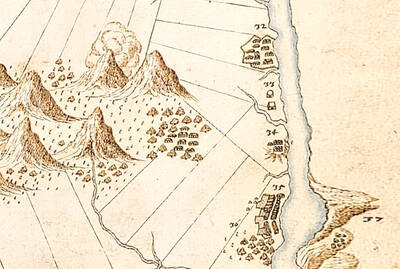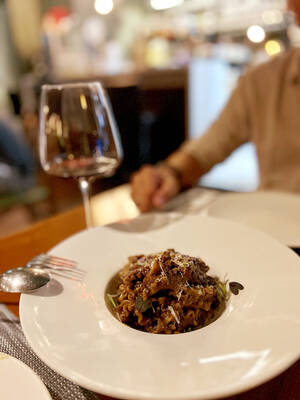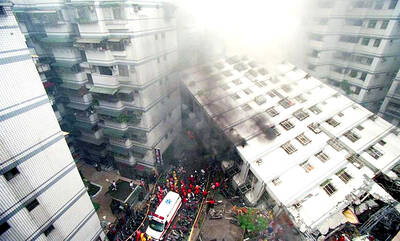W hat kind of woman with six children under the age of eight has eight frozen embryos implanted and gives birth to octuplets?
To her detractors, Nadya Suleman is a dangerously child-obsessed lunatic more in need of psychiatric help than fertility treatment. For these people, Suleman and the doctors who performed her in-vitro fertilization were guilty of a profound breach of ethics.
Making it worse, Suleman has the temerity to cash in on the babies whose birth last week was greeted almost as a miracle in a country reeling from a barrage of bad economic news and mass layoffs. Reality TV shows, books, lucrative interviews and even a proposed US$2 million chat show — all have reportedly been offered to America’s newest celebrity mother.
But on Tuesday, as the din of disapproval reached a crescendo, Suleman, 33, started to give her side of the story. Her newly hired publicist made an appearance on a popular morning talk show to extol Suleman’s natural virtues.
“My client is a wonderful woman, she’s smart, she’s bright, she’s well-educated, and she has a wonderful sense of humor,” crowed PR consultant Joann Killeen. “She’s looking forward to being the best mum she can possibly be to all her children. She looks at this as a blessed event.”
Killeen acknowledged that Suleman was fielding a barrage of offers.
“There are multiple envelopes and multiple proposals, and we will sit down with our client and decide what is the best way for her to tell her story,” Killeen said. “Everyone has a different idea of what she is going to do.”
Far from being a money-grubbing publicity hound, Suleman is a well-balanced individual who just loves kids, Killeen insisted.
“She’s going to look at all the opportunities and choices that she has to provide the best financial future for her children. She’s very excited about telling her story and setting the record straight about Nadya, her family and her life,” Killeen said.
That could be a hard job given what has already been leaked out to the press. Suleman’s mother told reporters a day after the birth that Nadya was “obsessed with children” and that she had ignored her mother’s plea to seek psychological help.
It remains unclear who the father is.
On the birth certificates of both sets of children, the father is listed as David Solomon, rather than Suleman’s divorced husband Marcos Gutierrez.
Suleman has little employment history, though she was working toward a masters degree in child development until the spring of last year.
There is great mystery about how she became impregnated. Doctors at Kaiser Permanente, where she gave birth, said they first saw Suleman when she was already 23 weeks pregnant.
Many fertility specialists maintained this weekend that impregnating a young woman with so many embryos was ethically wrong, because such a large multiple-foetus pregnancy poses huge dangers both to the mother and children.
“When we see something like this in the general fertility world, it gives us the heebie-jeebies,” said Michael Tucker, a clinical embryologist in Atlanta and leading researcher on infertility treatment.
Tucker added that in his opinion, “if a medical practitioner had anything to do with it, there’s some degree of inappropriate medical therapy there.”
For now, mother and kids are still in the hospital, which has been deluged with flowers, dozens of gift baskets full of eight items for the babies, and calls offering, support, advice or outrage.
“In the first few days, we got calls like ‘How dare you do this?’ and ‘You should have your (medical) license revoked,’” a hospital spokesperson told the Los Angeles Times. “There were even those few who wished the babies would not survive.”

Last week gave us the droll little comedy of People’s Republic of China’s (PRC) consul general in Osaka posting a threat on X in response to Japanese Prime Minister Sanae Takaichi saying to the Diet that a Chinese attack on Taiwan may be an “existential threat” to Japan. That would allow Japanese Self Defence Forces to respond militarily. The PRC representative then said that if a “filthy neck sticks itself in uninvited, we will cut it off without a moment’s hesitation. Are you prepared for that?” This was widely, and probably deliberately, construed as a threat to behead Takaichi, though it

Nov. 17 to Nov. 23 When Kanori Ino surveyed Taipei’s Indigenous settlements in 1896, he found a culture that was fading. Although there was still a “clear line of distinction” between the Ketagalan people and the neighboring Han settlers that had been arriving over the previous 200 years, the former had largely adopted the customs and language of the latter. “Fortunately, some elders still remember their past customs and language. But if we do not hurry and record them now, future researchers will have nothing left but to weep amid the ruins of Indigenous settlements,” he wrote in the Journal of

Even after years in business, weekend tables here can be booked out a month in advance. The price point far exceeds its competitors. Granted, expectations are soaringly high, but something here failed to hit the high notes. There are a few telltale signs that a restaurant relies solely on outstanding food to create the experience, no gimmicks or distractions needed. La Mole is such a restaurant. The atmosphere is food-forward, with an open kitchen center stage. Our tables are simple; no candles, no dim lighting, no ambient music. The menu is brief, and our waiter directs most

If China attacks, will Taiwanese be willing to fight? Analysts of certain types obsess over questions like this, especially military analysts and those with an ax to grind as to whether Taiwan is worth defending, or should be cut loose to appease Beijing. Fellow columnist Michael Turton in “Notes from Central Taiwan: Willing to fight for the homeland” (Nov. 6, page 12) provides a superb analysis of this topic, how it is used and manipulated to political ends and what the underlying data shows. The problem is that most analysis is centered around polling data, which as Turton observes, “many of these